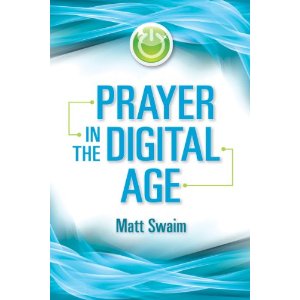 It would be so much easier to pray if God would get a Twitter account. Or at least a Facebook page.
It would be so much easier to pray if God would get a Twitter account. Or at least a Facebook page.
And how much more effective would our prayers be if we simply could instant-message them to God, and he could reply with real-time responses?
“Yes.”
“No.”
“Wait.”
I’m certain I’d spend more time in prayer if God would join the digital age. Alas, he still communicates the old-fashioned way.
Recently, a Confession App (iTunes Store, $1.99) sanctioned by the Catholic Church made headlines. Not because it actually offers absolution (there’s no app for that), but because it uses the most current technology to draw Catholics into an examination of conscience. Only after you actually receive the sacrament of reconciliation do you get to wipe the slate clean and begin to compile a fresh list of sins.
Other uses of technology for developing faith include downloadable Bibles (I have one on my phone and one on my Kindle), daily Bible verses by e-mail (today’s verse: “Heaven and earth will pass away, but my words will never pass away” — Matthew 24:35. Sobering thought.) And even online Bible study communities, for those too swamped with digital demands to make it to a local study group.
All of these tools reflect Jesus’ “great commission” to go out and “make disciples of all the nations.” Presumably, Jesus wants us to use whatever means we can employ to share the good news of the Gospel. Indeed, the pope has a Facebook page.
But a new book by Matt Swaim, Catholic convert and producer of “The Son Rise Morning Show” on EWTN Global Catholic Radio Network, challenges us to master our technology, and not let it master us as we navigate our journeys of faith.
“In a time when society continues to develop more and more efficient methods of horizontal communication with itself, it is more essential than ever to maintain our insistence on prayer, the unique form of vertical communication given to humans by God,” Mr. Swaim says.
Americans are a praying people. A 2008 Brandeis University study confirmed that 90 percent of us pray to God each day, approaching him with terms of familiarity and endearment (“Dear Lord” or “Hello, Jesus”). It’s not just an exercise in hopefulness. We believe God is listening, accessible and, at least some of the time, that he answers our prayers.
Yet, in his book, “Prayer in the Digital Age” (Ligouri Press), Mr. Swaim asserts our modern-day distractions are keeping us from experiences of God’s presence: “It is sadly ironic that at the end of the day, we often ask, almost whiningly, why God never seems to speak to us, when at the same time we persist in ignoring the fact that it’s awfully difficult to receive a signal that we aren’t tuning in to.”
Mr. Swaim says prayer is two-way communication, but that our relationships with God are now forced to bridge a digital divide. We’re so focused on the immediate, mostly superficial busyness of social networking, work-related messaging, entertainment media and “i-mania” that we don’t permit the one thing that facilitates authentic prayer: silence.
Ultimately, Mr. Swaim says, “Our instant access to information and to one another can foster in us a form of atrophy when it comes to certain skills and abilities, particularly those related to our ability to pray and to live our faith.”
In short, there’s just no substitute for tuning out from our digital pursuits and focusing our attention on communicating with God in the way he prefers — intimate conversation.
If there’s one way, though, that our digital age enhances prayer, it’s the use of the Internet to engage prayer warriors.
Thanks to frequent updates and invitations to pray, I’m lifting up today an 18-year-old cancer patient named Alex, and sadly, the family of a 39-year-old wife and mom of six who lost a brief but courageous battle with a rare blood disorder.
Rest in peace, Petra.
Copyright 2011 Marybeth Hicks
About the Author

Guest
We welcome guest contributors who graciously volunteer their writing for our readers. Please support our guest writers by visiting their sites, purchasing their work, and leaving comments to thank them for sharing their gifts here on CatholicMom.com. To inquire about serving as a guest contributor, contact editor@CatholicMom.com.


.png?width=1806&height=731&name=CatholicMom_hcfm_logo1_pos_871c_2728c%20(002).png)
Comments